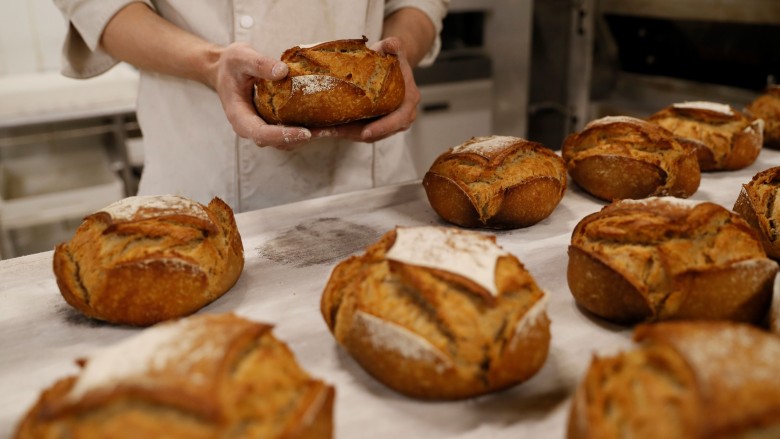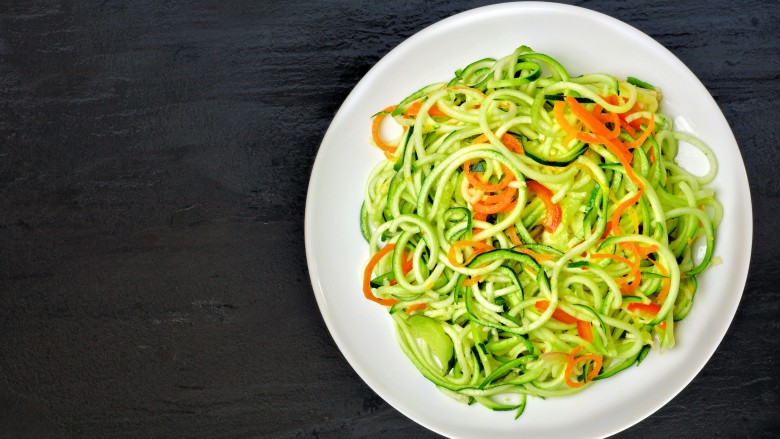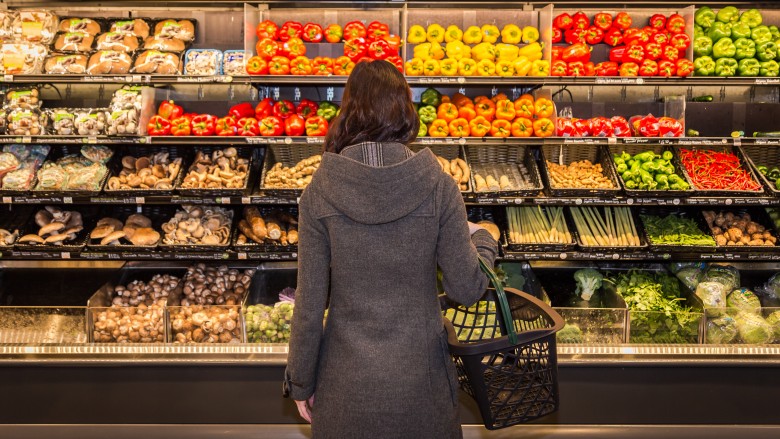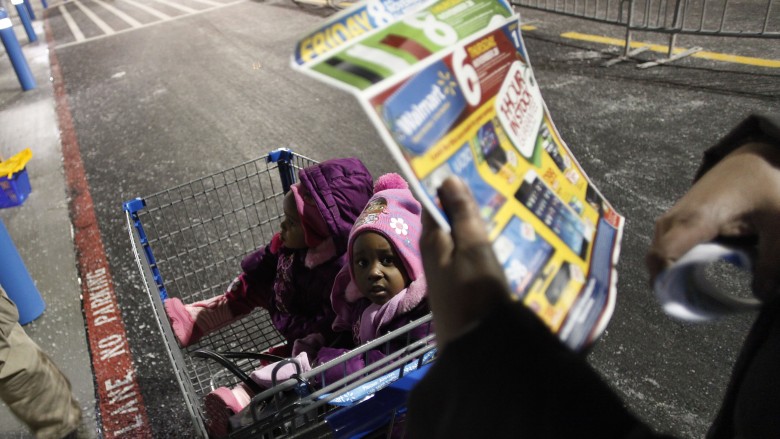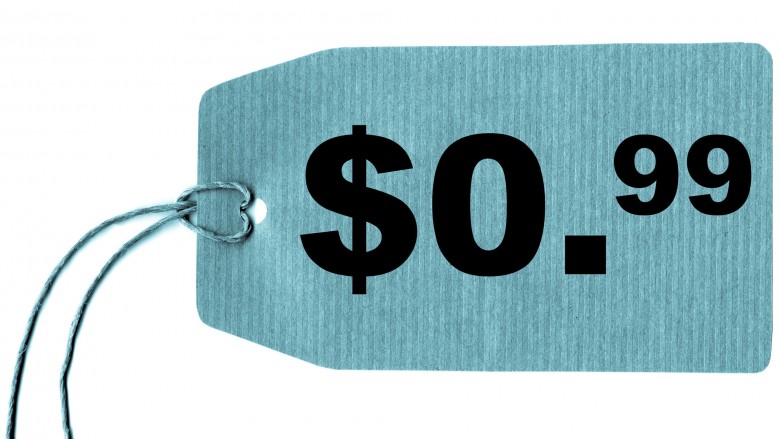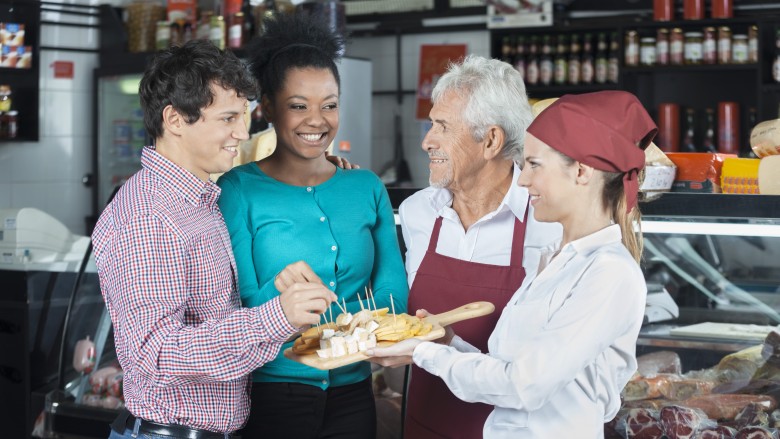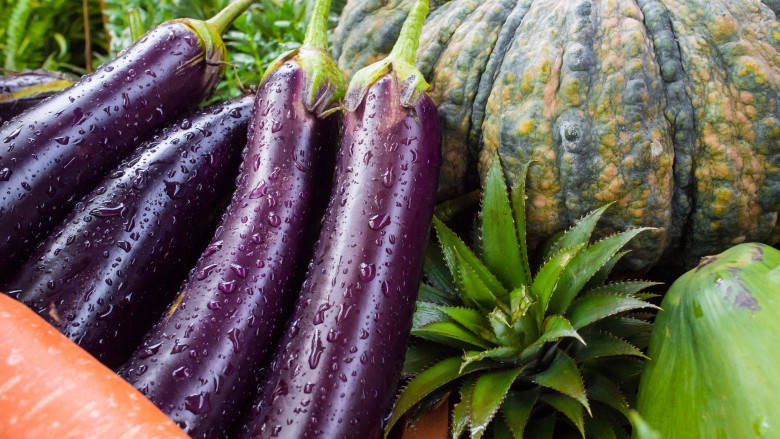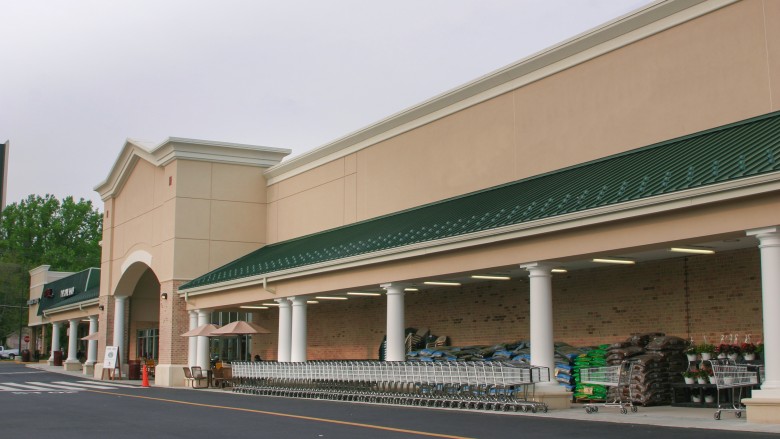How Grocery Stores Trick You Into Spending More
Online retailers may be dominating nearly every other purchase you make, but brick and mortar grocery stores still reign supreme in the market for our weekly food dollar. The supermarkets know you are a captive audience, and there is an entire industry dedicated to not only predicting, but guiding a shopper's mind to making the purchases the store would like you to make. Every part of your seemingly innocent shopping experience has been cleverly orchestrated, from the placement of products, to the size of your cart, to the music playing as you sail down the cookie aisle. Think you are immune to the psychological games at play? See for yourself how many of these tricks you have fallen prey to.
Larger carts
"But I just came in to buy milk!" How many times have you blurted that phrase as you paid your $114 bill? There are a number of ways supermarkets employ their empty-your-wallet magic at the register, and one of them is the ever-increasing size of your shopping cart. Marketing consultant Martin Lindstrom told Today, "We did an experiment with that, and we actually doubled the size of the shopping cart... and you buy 40 percent more. In Whole Foods, the shopping carts over the last two years have doubled in size almost."
So how do you outsmart the store? Stick to a list, and if you're only there for a few items — skip the cart altogether, and carry your purchases in your arms.
High margin items are near the front door
Take a moment to think about the departments of the store you are in as soon as you walk in the front door. Is it the florist? The bakery? The specialty food section with freshly made sushi rolls and those fragrant rotisserie chickens? This is no coincidence, and it's a two-fold manipulation on the part of the store to get you in a spending kinda mood. Not only are these sections loaded with higher cost, higher margin items, but the sweet smells and colors they dazzle us with transport us to the feel-good space the store wants us to be in for the rest of our shopping experience. Even the location of the produce aisle has been carefully plotted — filling your cart with those gorgeously colored and healthful veggies at the beginning of your shopping trip makes you feel better about the cookies and potato chips you'll be adding in a few aisles.
Candy and magazines
Ever wonder why there never seems to be enough staff to man all the cash registers of your local supermarket? The scourge of parents throughout the country — the dreaded check out lane, where you are surrounded by a prison of candy, colorful magazines, and a plethora of intriguing, purse-sized impulse buys. Breath spray! Ear buds! Paleo beef jerky! Even a reasonably-minded adult has trouble getting through this booby-trapped lane intact, but with kids in tow, the store knows they've got you right where they want you. My local store has even upped the ante with key-chain sized stuffed animals and sticker books. Well played, Shop Rite. Well played.
At least you can unload the stuff you've decided you no longer wish to buy somewhere on the checkout line, right? Well, the stores know customers have a tendency to do this, and have made the lanes all the more small to thwart your grocery ditching. With no place to deposit your unwanted items, you're more likely to buy them.
Precut veggies and fruit
What's your time worth to you? The grocery store is banking on it being worth a whole lot — so much in fact, that you'd be willing to pay nearly two times per pound for your fresh fruits and veggies the store has precut for you. Sometimes it makes sense — butternut squash is a bear to cut and peel, and if you are dying to get your zoodle on but don't own a zoodler, a package of zucchini noodles is going to get you the dinner you want. But the problem with precut veggies and fruit is that they don't stay fresh very long, so if you don't plan to enjoy them within a day or so of buying them, they can be pretty wasteful. Buy the precut stuff when you're truly pressed for time, or cooking for a large crowd. Otherwise, keep that knife sharpened and buy the whole fruit or veggie.
Purposely reorganizing
Items seem to often be changing location in my store, and I always chalked it up to the store scrambling to find room on their limited shelves for their ever-increasing product lines. Turns out, I was way off base. Stores deliberately change and reorganize the placement of entire departments, sometimes on a yearly basis, and they do this to keep you on your toes, and to keep your eyeballs on new products." Hey! Look at that! Organic magic shell!" It's a brilliant play on the part of the store, as new products inevitably make their way into your shopping cart.
Advertising full-priced items in circulars
The store circular is loaded with all the best sale prices in the store, right? Wrong. Yes, there are some great deals and sales to be found there, but the store is banking on your assumption that every item listed in the circular is being listed at a sale price. Often, the store is advertising new or even old items at their normal, retail price. This doesn't mean you should ignore the circular entirely. Savvy shoppers who keep a regular eye on the circular can spot these tricks quickly, particularly coupon users who monitor the circulars carefully to maximize their coupon savings. The circular is also a terrific way to keep up-to-date on seasonal shopping bonuses, like free holiday hams when you make a minimum purchase in a designated time frame.
The 99 cents trick
By now we've all learned this one. When retailers price something with 99 cents at the end, our subconscious minds tell us it's a better deal than an item priced one penny more. So it should come as no surprise that many items in the supermarket are priced this way. That can of organic pinto beans doesn't cost $2.40, it costs $2.39. The trick that you may not have noticed however, is that many grocery stores have taken to dropping the dollar sign altogether. Apparently, seeing just the numbers and removing that mighty dollar sign sends a signal to our brains that an item is actually not that expensive, and encourages us to load up our huge cart even more with all the fantastic deals we are scoring.
Free samples
You know how, when a person gives you a gift, you want to give them something back? It's not just because your mother taught you good manners, it's also because most of us have an instinct for reciprocity, and the stores know this. Stopping for a sample of that new flavor of Triscuit topped with that new edamame hummus does a few things. First, it slows you down in the aisle, and distracts you from the purpose of where you were originally headed. Friendly banter with the employee offering you the free taste establishes a relationship. They will tell you how great the product is, and what a great deal it is at "insert cost here." It's probably not even on sale. For many of us, we will now feel obligated to buy the item. I myself used to be a sample-maker at a BJ's Wholesale Club back in my college days. In my far-from-scientific observation, I would say at least 75 percent of the people who stopped for a taste ended up buying the item. Resist!
Spraying water on produce
Spraying the fresh produce with water means the store is doing their part to make sure we go home with a fresher product, right? Wrong again. It turns out that spraying all that misty water onto our produce is just about the worst thing the store could be doing in terms of delivering a fresher product — wet produce actually spoils much faster. So why would the store do this? For one, produce loses a lot of its hydration in shipping, and when an item is sold by weight, every little ounce counts. Misting the produce with water gets the hydration levels up again, as well as the cost. Second, we are visual creatures, and those dew drop speckled vegetables conjure a fresh from the farm image we want to take home to our own kitchens. So what can you do at the store? Inspect your produce well, and shake out that extra water before adding it to your cart. Once home, dry it well and store it with paper towels to absorb excess moisture, and prolong its fridge-life.
The stocking formula
There is a magic formula in how stores stock the goods on their shelves, and it's a formula that encourages you to rack up your spending at the supermarket. The average shelf in the center of the store is going to have four separate sections. The bottom of the shelf is where you will see store-brands, discount brands, and bulk or oversized items. One step up from the bottom level, we have the kid's eye level, and it's filled with all those character-endorsed goodies your children will beg and plead to not leave the store without. One step up from that is the "bulls-eye zone." The prime real estate right in an adult's sight line is an area that many manufacturer's actually pay the store a fee to be displayed in. Expect to see big name brands here, and also items that have the highest markups. One more step up, on the tippy top shelves, you'll find your gourmet, specialty, or local items. This may be the one section of the store that the local management actually has some control over.
More shelf stocking tricks
When it comes to stocking the shelves, the store has a couple more tricks up its sleeve. The first one, which we all have no doubt fallen prey to, is the pairing of complementary items on the shelves. That's when the salsa is right next to the tortilla chips, the marshmallows are neighbors to the instant hot cocoa, or the steak sauce gets its own small shelf in the meat department.
The next trick is the multiple locations in the store where you can find the exact same product. You've got your regular run-of-the mill crackers in the center of the store, but over in the fancy cheese section, that's where the pricier gourmet crackers are housed. Those rosemary scented crisps from France seem to make much more sense when you are buying a $10 log of herbed chevre. One more trick? The end cap. That's the location at the end of an aisle that it typically filled with one featured product at one price. But is it a good price? Chances are it's not even on sale. Merchandisers pay big bucks for that high-end location, so don't fall for it.
The one-way entry door
Ever noticed how challenging it is to get out of the store if you are not buying something? This is of course no accident. Every step of your journey from the time you enter those automatic doors has been carefully mapped out for you, from the sensory-triggering bakery department, to the long journey to the back of the store for basic essentials like milk and eggs. If you want to leave the store, you've got to get past the goalie working the cash register, or walk completely to the other side of the store from where you initially entered. Just think of the dizzying array of merchandise you'll spy on your way.. .do you really think you're making it out empty handed?


